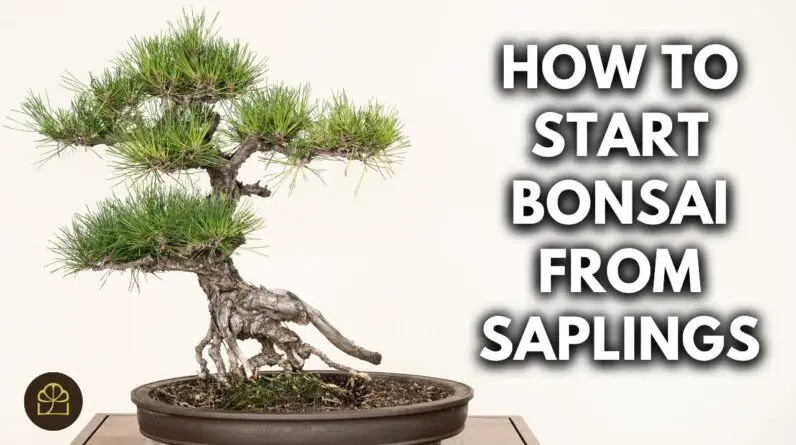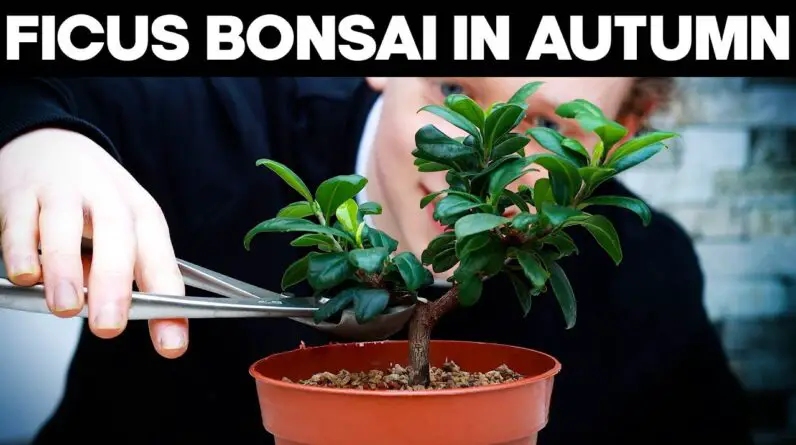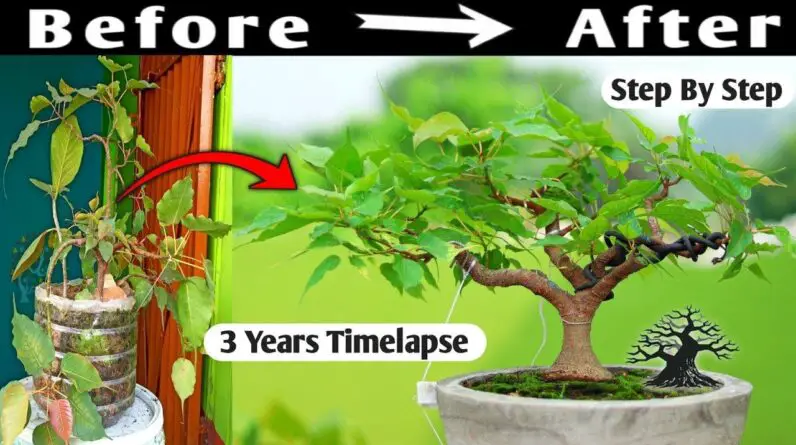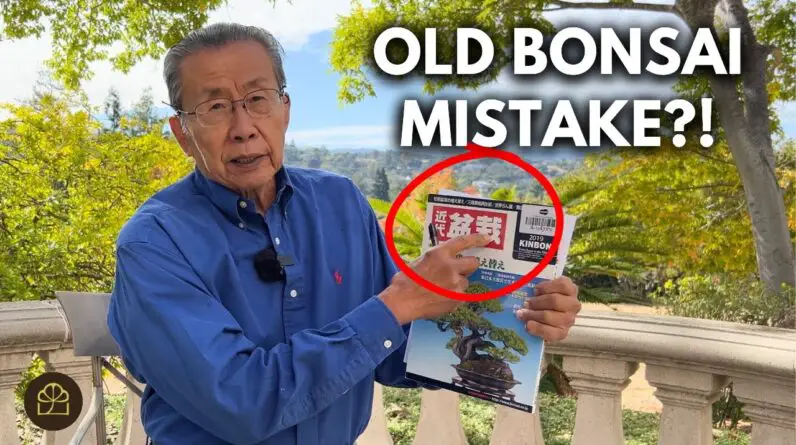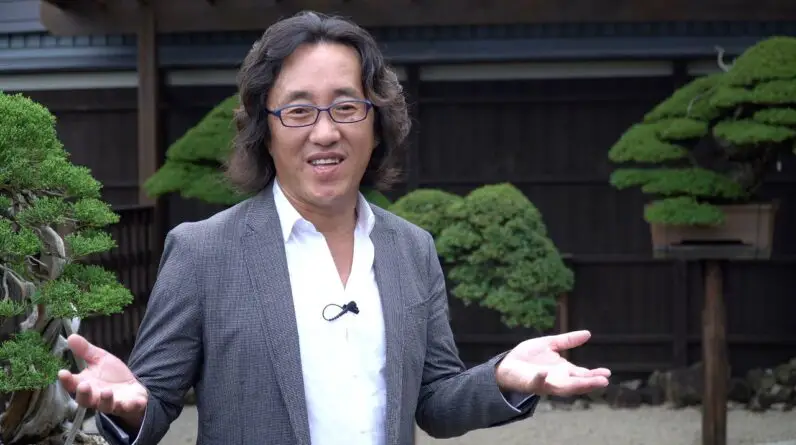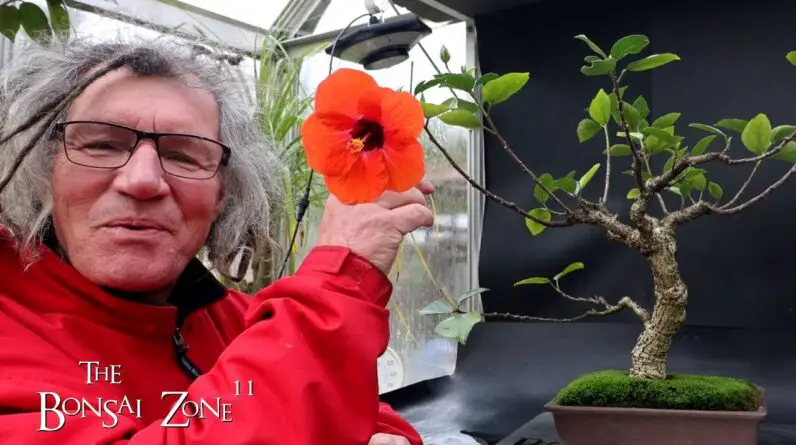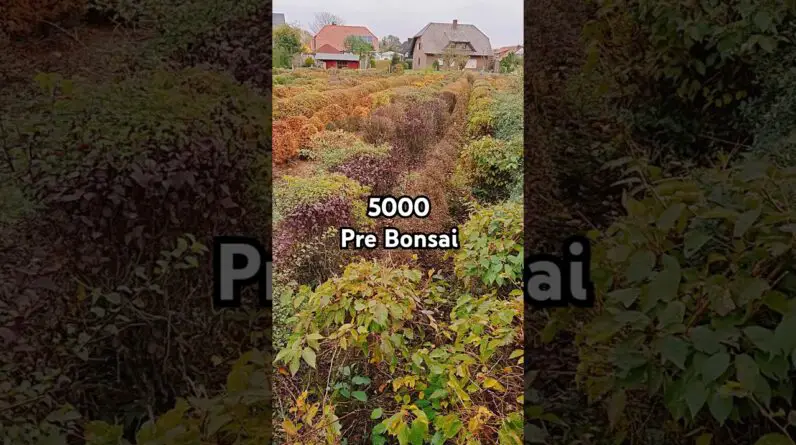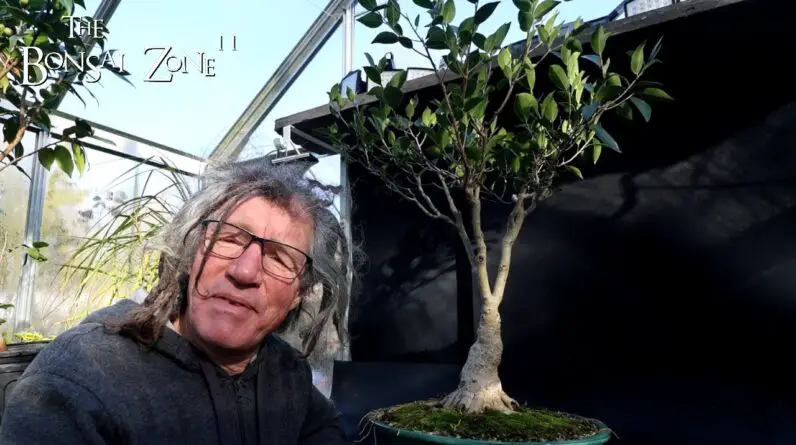Intend to find out exactly how to make an Apple bonsai tree? In this video clip by Bonsai Realm, they show you how to prune and wire an Apple tree that is around 15 years of ages. The video clip was filmed during autumn, when the tree was full of small apple trees.
Bonsai Realm is passionate about sharing the living art of Bonsai and produced this do it yourself tutorial to help and influence novices. This video belongs to their on-line programs, but they provide numerous other free videos also.
So if you want finding out more concerning Bonsai strategies, head over to Bonsai Empire’s site!
In the video clip, they describe the process of trimming and wiring this Apple bonsai tree. They utilize small trimming shears, pliers, and cord cutters. The top branch is the first to be trimmed, and afterwards they concentrate on two thicker branches to accomplish the desired silhouette.
They show the significance of a 360-degree technique when cutting and wiring to avoid any type of dead angles. After the pruning and circuitry, the tree looks much more refined and balanced. With routine maintenance, this tree will continue to prosper and grow new branches in the upcoming springtime. If you intend to learn more regarding pruning, wiring, and repotting methods, consider joining Bonsai Empire’s on-line courses and gain access to specialist support and the chance to ask the instructors questions straight.
Apple Bonsai Tree: An Intro
Welcome to the globe of apple bonsai trees! Creating and cultivating a small apple tree can be a gratifying and meeting hobby. Not just do these bonsai trees provide an attractive aesthetic, yet they also use the opportunity to grow your very own fruits in a little and manageable space.
In this comprehensive post, we will assist you with the procedure of selecting the best apple tree variety, collecting the needed products, growing the tree from seeds, pruning and circuitry techniques, appropriate upkeep, potting considerations, and the distinctions between outdoor and indoor apple bonsai trees.
Think about the Size of the Bonsai
When picking an apple tree variety for bonsai growing, it is very important to consider the supreme size of the tree. Considering that bonsai trees are suggested to be mini versions of their larger counterparts, choosing a variety that normally remains little is essential. Seek apple tree selections that are understood for their compact development and smaller sized stature, such as columnar apple trees or naturally dwarf ranges. This will guarantee that your bonsai stays in proportion and is less complicated to take care of.
Pick a Crab Apple Tree Selection
Crab apple trees, with their tiny and dynamic fruits, are often the recommended option for apple bonsai farming. These trees naturally have extra fragile and symmetrical features, making them fit for bonsai aesthetic appeal. In addition, crab apple trees are hardy and adaptable, making them simpler to take care of and keep as bonsai specimens. Consider varieties such as Malus sylvestris or Malus floribunda, which are frequently used in bonsai cultivation.
Consider the Climate and Place
Before choosing the apple tree range for your bonsai, it is very important to think about the environment and location where you plan to grow it. Various apple tree varieties prosper in different climates, so select a variety that is well-suited to your specific area. Furthermore, bear in mind the amount of sunshine and temperature level requirements of the picked selection. Most apple trees require full sun to grow, so guarantee that your selected area offers ample sunlight throughout the day.
Select an Appropriate Bonsai Pot
Picking the right bonsai pot is essential for the health and wellness and aesthetic appeals of your apple bonsai tree. Look for a pot that is proportionate to the dimension of your tree and complements its total style. Bonsai pots can be found in various products such as ceramic, plastic, or clay. Each product has its very own benefits and considerations, so pick one that suits your individual preferences and the details requirements of your apple bonsai tree.
Get High Quality Bonsai Soil
High-quality bonsai soil is necessary for the healthy development of your apple bonsai tree. The dirt must provide adequate drainage while keeping enough dampness for the tree’s roots. You can acquire pre-made bonsai dirt blends that are especially designed for bonsai cultivation, or you can create your own mix by integrating parts such as Akadama, pumice, and lava rock. Trial and error with different soil mixtures might be required to locate the excellent balance for your apple bonsai tree.
Acquire Pruning and Circuitry Devices
Trimming and wiring are necessary techniques for forming and maintaining the kind of your apple bonsai tree. To successfully prune and wire your bonsai, you will certainly require a set of appropriate tools. Some vital devices include a concave branch cutter for accurate trimming, bonsai cord cutters for managing the cord, and pliers or tweezers for intricate work. Purchase premium tools to guarantee precision and decrease damages to your apple bonsai tree.
Accumulating Apple Seeds
Among one of the most gratifying ways to start an apple bonsai tree is by growing it from seeds. You can gather apple seeds from ripe fruits or purchase them from trusted suppliers. Guarantee that the seeds are fresh and viable for the very best possibilities of germination.
Prep work of Seeds for Growing
Before planting the apple seeds, it is essential to prepare them for optimal germination. Beginning by saturating the seeds in water for 24 hr to soften the external seed coat. After soaking, remove the seeds from the water and permit them to dry for a couple of days. This process aids damage the seed’s dormancy and raises the opportunities of successful germination.
Growing and Germination Refine
When the seeds are prepared, plant them in small pots filled with well-draining bonsai soil. Location the pots in a cozy and sunny area, and keep the soil consistently damp. Germination generally takes about 2 to four weeks, depending upon the selection and ecological problems. Once the seedlings have actually grown, select the healthiest ones to continue expanding as your future apple bonsai trees.
Understanding Trimming Techniques
Trimming is an important facet of bonsai cultivation that helps keep the tree’s size, form, and total aesthetics. By uniquely removing branches and foliage, you can accomplish the desired type and balance. Learn about different pruning techniques such as maintenance pruning, branch trimming, and pinching to preserve the health and shape of your apple bonsai tree.
Identifying the Right Branches to Prune
When pruning your apple bonsai tree, it is necessary to recognize the branches that require to be trimmed. Try to find branches that interfere with the preferred type or impede the tree’s total equilibrium. Eliminate any kind of dead, harmed, or undesirable branches to promote healthy and balanced growth and avoid illness. Consult bonsai resources or look for advice from experienced bonsai enthusiasts if you’re uncertain which branches to prune.
Pruning to Achieve Preferred Forming
Pruning is not only about upkeep yet also concerning shaping your apple bonsai tree. Use pruning strategies to assist the tree’s development and attain the preferred form and design. Think about standard bonsai forms such as formal upright, inclining, or cascade, and adjust them to fit the attributes of your apple bonsai tree.
Preparing the Tree for Circuitry
Wiring is another vital strategy in bonsai cultivation that helps develop and preserve the wanted form and framework of your apple bonsai tree. Before applying cables, make certain that the branches and trunk are flexible adequate to be controlled without triggering damage. Younger branches are much more adaptable and less complicated to wire, while older branches might need progressive bending in time.
Choosing the Right Wire Dimension
Picking the ideal cord dimension is crucial to stay clear of harming the branches of your apple bonsai tree. The cord ought to be solid sufficient to hold the preferred form without cutting into the bark. Choose a cord size that is about one-third of the density of the branch being wired. Copper or aluminum cable is commonly used, yet make sure it is soft sufficient to be conveniently formed.
Applying Wiring Techniques
To wire your apple bonsai tree, start by wrapping the cable at the base of the branch or trunk and afterwards delicately spiral it upwards, ensuring to maintain a 45-degree angle in between the cable and the branch. Take care not to cover the cord too securely, as it can limit the tree’s blood circulation and create damages. As soon as the wanted shape is attained, secure the cord by turning the ends with each other or using cable clips. Get rid of the cable after a few months to avoid it from cutting into the bark.
Watering and Dampness Control
Appropriate watering is essential for the wellness and vigor of your apple bonsai tree. The regularity and amount of water required depend on various elements such as the environment, pot size, and tree’s growth stage. Water your apple bonsai tree when the leading inch of soil feels completely dry, making certain that the water reaches the entire origin system. Stay clear of overwatering, as it can cause root rot and various other fungal illness.
Feeding and Nutrient Demands
Maintaining dirt fertility is vital for the healthy growth of your apple bonsai tree. Use a balanced fertilizer during the growing season to offer the essential nutrients for ideal development. Use organic or slow-release fertilizers particularly developed for bonsai trees, complying with the advised dosage directions. Routinely keep track of the tree’s feedback to fertilizing and change the feeding program as necessary.
Pest and Condition Management
Like any other plant, apple bonsai trees can be prone to various insects and diseases. Routinely check your tree for indicators of problem, such as stained fallen leaves, parasites, or uncommon development. If any issues are found, immediately take proper procedures to regulate and remove the issue. Take into consideration using natural pest control methods or talk to professionals if necessary.
Repotting Frequency and Timing
Repotting is an important task in bonsai farming that enables root system wellness and overall growth control. The regularity and timing of repotting depend on various aspects such as the age and development price of the apple bonsai tree. As a basic standard, repotting is commonly done every two to three years, ideally throughout the early springtime before the tree starts actively growing.
Choosing an Appropriate Bonsai Pot
When repotting your apple bonsai tree, pick a brand-new pot that is a little larger than the current one. Take into consideration the appearances and total balance of the tree when selecting the pot’s form and style. Ensure that the pot provides sufficient water drainage holes and is made from a material that is suitable for bonsai farming.
Transplanting and Origin Trimming
During repotting, very carefully remove the tree from its present pot and delicately loosen up the root round. Examine the origins and trim any broken or excessively long origins. This procedure, known as root trimming, assists stimulate new root development and maintains the tree’s root system small. After root pruning, place the tree in the brand-new pot, making certain that the roots are uniformly dispersed and covered with fresh bonsai soil.
Proper Potting Techniques
When potting your apple bonsai tree, usage proper methods to ensure its security and healthy and balanced growth. Placement the tree somewhat off-center in the pot to develop a feeling of activity and equilibrium. Secure the tree in position using bonsai cords or rocks, and fill the continuing to be area in the pot with bonsai dirt, guaranteeing that no air pockets are left. Water the fresh potted tree extensively and monitor its recovery throughout the adhering to weeks.
Advantages and Considerations for Outdoor Bonsai
Growing an exterior apple bonsai tree enables it to experience the all-natural transforming seasons, which can enhance its overall beauty. Outdoor bonsai trees generally have more space to grow and develop a stronger root system. However, outdoor bonsai trees require careful consideration of climate and weather conditions, protection from extreme temperature fluctuations, and regular exposure to sunlight.
Benefits and Challenges of Indoor Bonsai
Growing an apple bonsai tree indoors provides more controlled conditions and allows enthusiasts in colder climates to enjoy bonsai cultivation year-round. Indoor bonsai trees require careful attention to temperature, humidity, and lighting conditions. Supplemental lighting may be necessary, especially during the winter months when sunlight exposure is limited. Additionally, indoor bonsai trees may require more vigilant pest and disease management due to the controlled environment.
Creating and caring for an apple bonsai tree is a rewarding and fulfilling endeavor. With proper knowledge and techniques, you can enjoy the beauty of nature in a miniature form and even grow your own miniature apples.
By choosing the right variety, gathering the necessary materials, mastering pruning and wiring techniques, maintaining proper care, and selecting the right pot and location, you can cultivate a stunning apple bonsai tree that brings joy and tranquility to your surroundings.
Happy bonsai cultivation!
[sspostsincat category=”Flowering Crabapple Bonsai”]


